Delve into the lively and imaginative world of monkey coloring pages! Whether you’re a budding artist, a parent seeking creative or educational activities for your children, or simply someone who finds joy in coloring, these pages offer a delightful opportunity to bring these mischievous creatures to life through vivid colors. Join us as we explore a diverse collection of monkey-inspired designs, each ready to be transformed into a masterpiece that captures the spirit of these playful animals.

Simply choose the sheet that appeals to you, download the free PDF template, print it, and enjoy coloring to your heart’s delight.
Alternatively, you can also utilize these designs as embroidery patterns or draw inspiration for intricate fine line tattoos.
Monkey facts
For those who are new to my coloring pages, it’s important to mention that I enjoy providing the opportunity to acquaint yourself with the subject matter.
This way, you can seamlessly transform your coloring experience into an educational journey. With that said, let’s begin!
Here are lots of fun and interesting, basic, facts about monkeys:
- Diverse Species: Monkeys belong to two major groups – New World monkeys (found in the Americas) and Old World monkeys (found in Africa and Asia). They come in various sizes, shapes, and colors.
- Tail Variations: Monkeys have a wide range of tail types. Some have long prehensile tails that can grasp and hold objects, while others have short or even no tails.
- Social Creatures: Most monkeys are highly social animals, living in groups called troops or bands. These social structures provide safety, assistance in finding food, and opportunities to learn from one another.
- Communication: Monkeys communicate through a combination of vocalizations, body language, and facial expressions. Different species have distinct calls for various situations, such as warning of danger or indicating the location of food.
- Tool Usage: Some monkeys, particularly those of the Old World, exhibit tool usage. They might use sticks to extract insects from tree bark or rocks to crack open nuts.
- Highly Intelligent: Monkeys are known for their cognitive abilities. Some species are capable of problem-solving, learning from experience, and even recognizing themselves in mirrors.
- Parenting and Child Care: Monkeys typically have strong maternal bonds. Mothers are very attentive to their young ones, often carrying them on their bodies for protection and nurturing.
- Variety in Diet: Monkeys have diverse diets, which can include fruits, leaves, flowers, insects, small animals, and even bird eggs.
- Distinct Behavior: Different monkey species exhibit unique behaviors. For example, capuchin monkeys are known for using tools, while howler monkeys are recognized for their loud vocalizations.
- Adaptive Skills: Monkeys have shown remarkable adaptability to various environments. Some species can live in forests, savannas, mountains, and even urban areas.
- Close Relatives: Monkeys are more closely related to humans than other primates like lemurs or tarsiers. This relationship is evident in their anatomy, behavior, and genetic makeup.
- Endangered Species: Several monkey species are endangered due to habitat loss, hunting, and the illegal pet trade. Conservation efforts are crucial to their survival.
- Entertainment in Culture: Monkeys have appeared in various cultural contexts, from ancient myths and legends to modern movies and literature. They often symbolize cleverness, mischief, or even human traits.
- Strong Sense of Smell: Some monkey species have a keen sense of smell, which they use to detect food sources, communicate, and navigate their environments.
- Complex Social Hierarchy: Many monkey species establish complex social hierarchies within their groups. Dominant individuals have access to better resources and mating opportunities.
That’s just a taste of what there is to know about monkeys.
If you would like to learn more, here are some reputable resources to learn about them while coloring:
- https://en.wikipedia.org/wiki/Monkey
- https://www.nationalgeographic.org/photo/monkey-facts/
- https://animals.sandiegozoo.org/animals/monkey
- https://www.pbslearningmedia.org/resource/9ddc8121-8e2d-46b3-9df8-b8cb1359338c/monkeys/
- To see all of my free printables, go here.
- If you would like to see an alphabetized index of free printable coloring pages, go here!
- All of my animals coloring pages are found here.
- Or, my other mammals coloring pages can be found here.
Coloring tips
Coloring a picture of a monkey can be a fun and creative activity.
Here are some tips and tricks to help you make your monkey artwork really stand out:
- Reference Images: Use reference images of real monkeys to understand their natural colors and patterns. This will make your coloring more accurate and realistic.
- Color Variety: Monkeys come in a wide range of colors, from browns and grays to vibrant reds and blues. Experiment with different color combinations to bring your monkey to life.
- Texture and Fur: Monkeys have various fur textures, from sleek and shiny to thick and coarse. Use different shading techniques to convey fur texture and depth.
- Layering: Start with light colors as a base layer and gradually build up darker shades. Layering adds depth and dimension to your coloring.
- Color Pencils or Markers: Choose your preferred coloring tools—colored pencils for a softer, textured look, or markers for bold and smooth colors. You can even combine both for a mixed media effect.
- Blending: Blending is key to achieving a realistic look. Use techniques like burnishing (applying heavy pressure with a colored pencil) or using a colorless blending pencil to smooth out transitions between colors.
- Highlights and Shadows: Observe your reference image to determine where light and shadows fall on the monkey’s body. Use lighter shades for highlights and darker shades for shadows to add depth.
- Contrast and Saturation: Enhance the visual appeal by creating contrast between light and dark areas. Adjust the saturation of colors to make them pop.
- Backgrounds: Consider the monkey’s habitat when choosing a background color. It can complement the monkey’s colors and create a cohesive scene.
- Color Harmony: Pay attention to color harmony. Choose colors that work well together and create a pleasing overall composition.
- Experiment with Patterns: Some monkeys have unique patterns on their fur, like stripes or spots. Embrace these patterns to add complexity and interest to your coloring.
- Practice Makes Perfect: Coloring is a skill that improves with practice. Don’t be discouraged if your first attempt isn’t perfect. Keep practicing and experimenting with different techniques.
- Online Tutorials and Videos: There are many online tutorials and videos that offer step-by-step guidance for coloring various subjects, including monkeys. These can provide valuable insights and techniques (YouTube is a great resource for this).
- Personal Style: While accuracy is important, don’t be afraid to infuse your personal style and creativity into your coloring. Experiment with different color choices and techniques to make the artwork uniquely yours.
- Have Fun: Remember that coloring is a relaxing and enjoyable activity. Let your creativity flow and have fun while creating your masterpiece.
Whether you’re coloring for relaxation or artistic expression, these pro tips should help you bring your monkey coloring sheets to life with vibrant colors and realistic details.
Options For Printing:
Letter M is for monkey writing practice worksheets
*My letter M is for monkey coloring sheet printables are specifically designed to be used in a classroom setting, they are the only printable options on this page that do not need written permission to use in a public setting.
Please send the link to this post along if anyone asks you where you got them. Thank you!
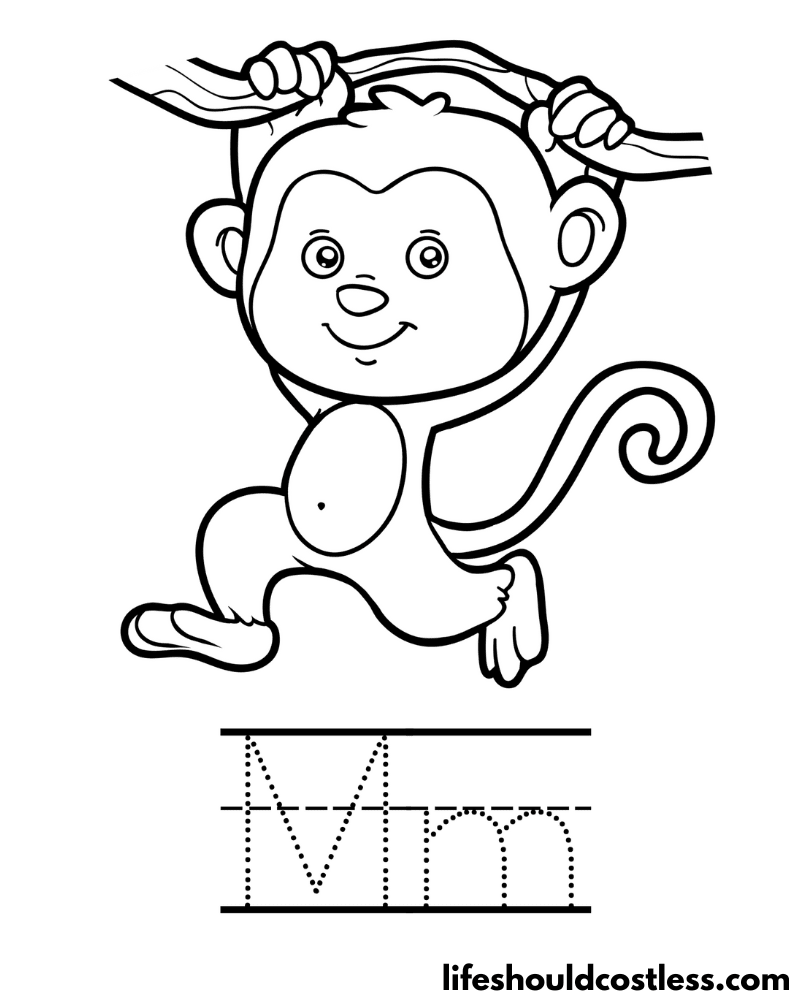
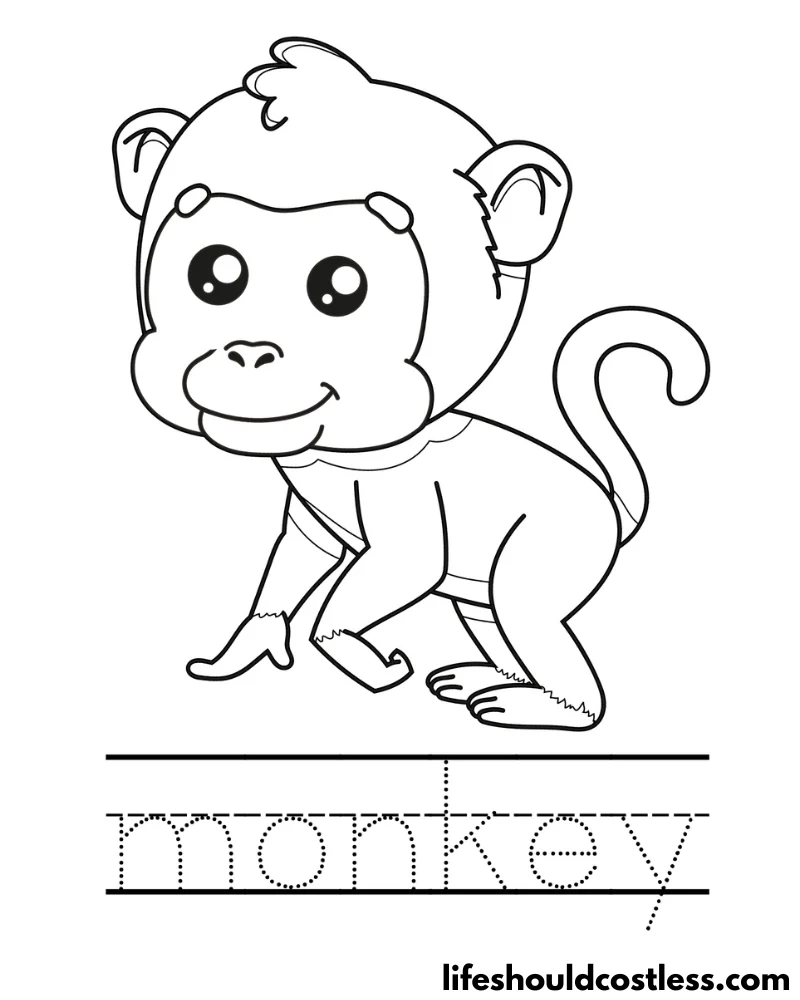
Various monkey designs
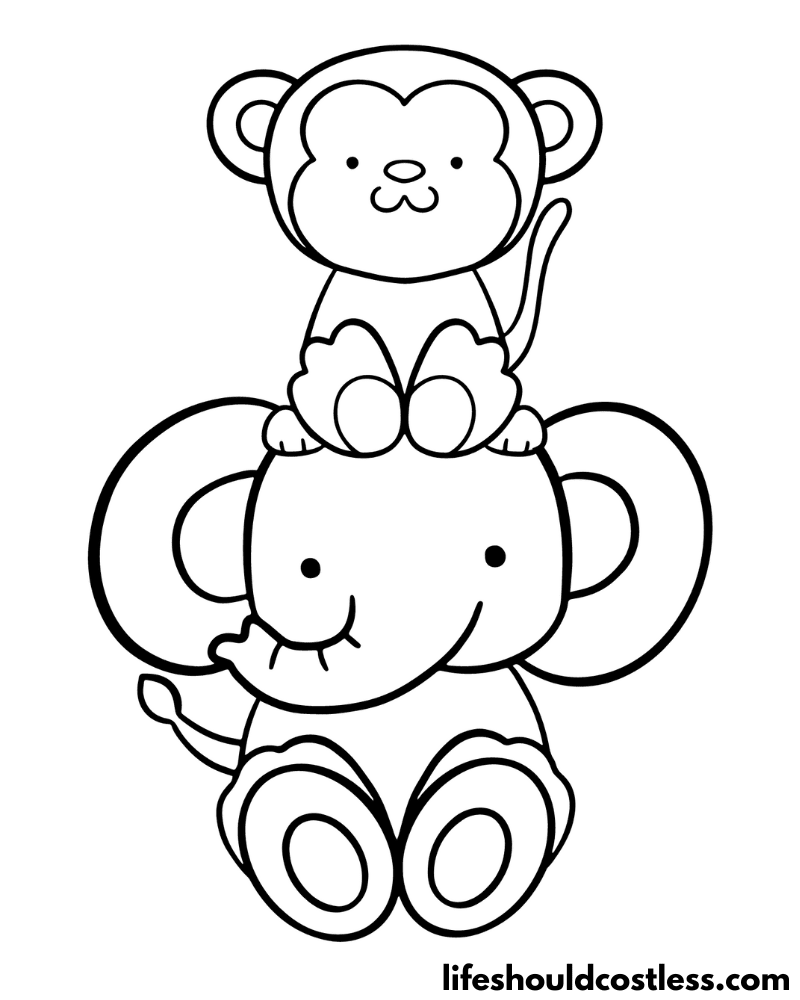
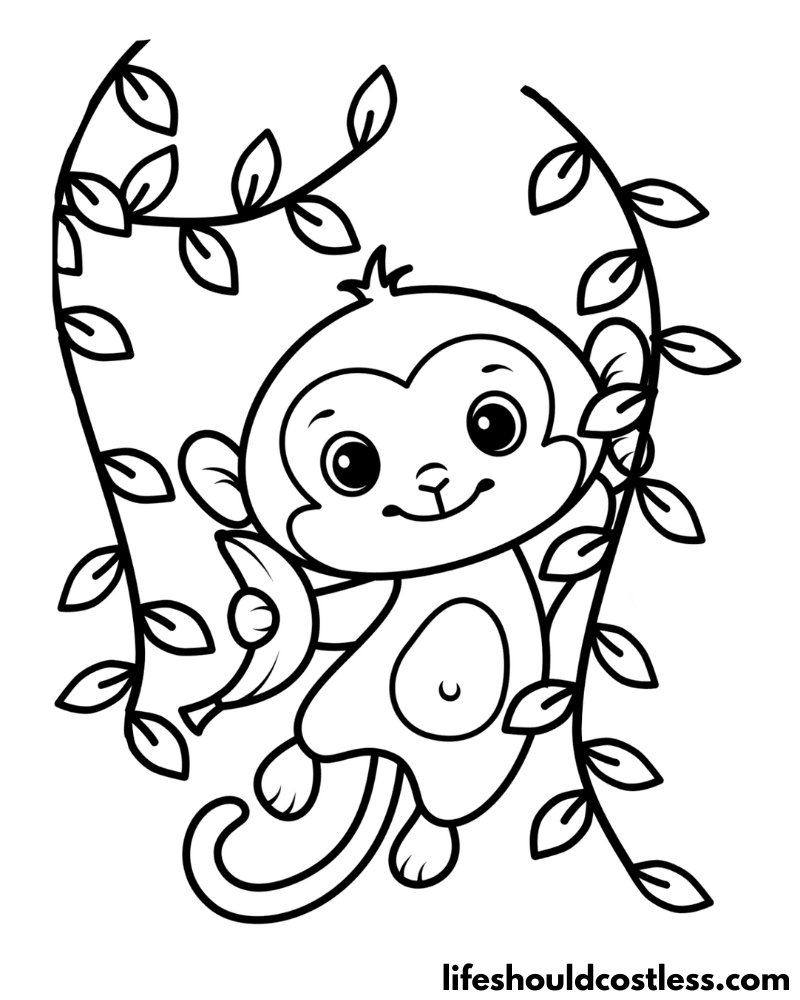

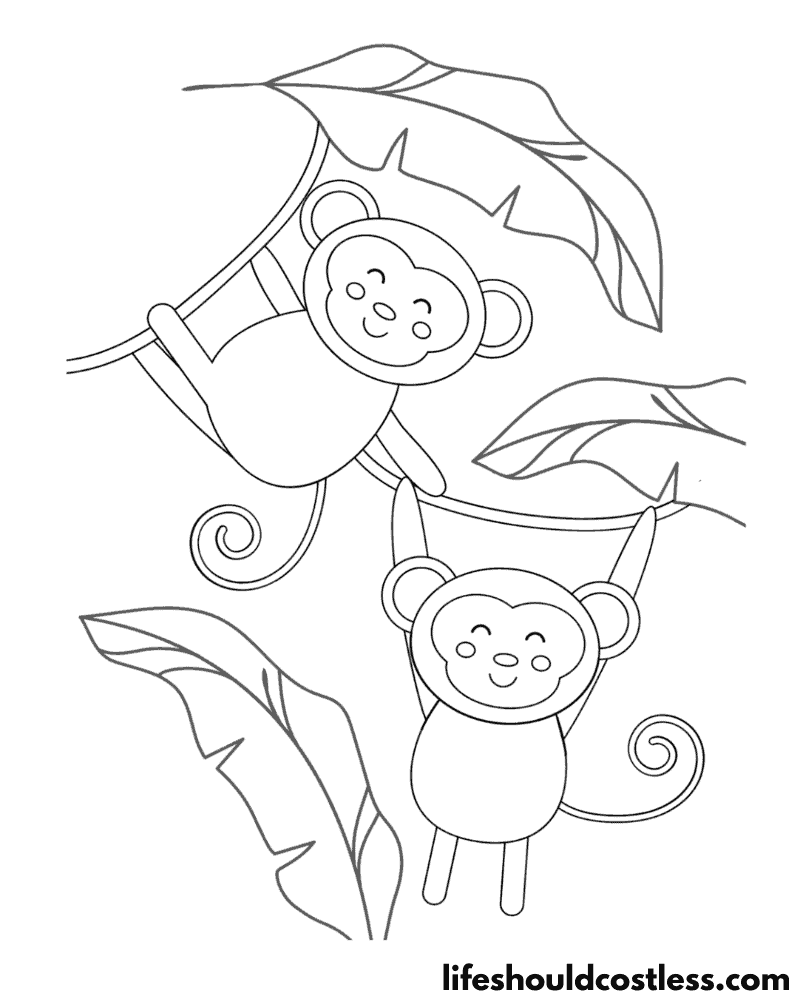
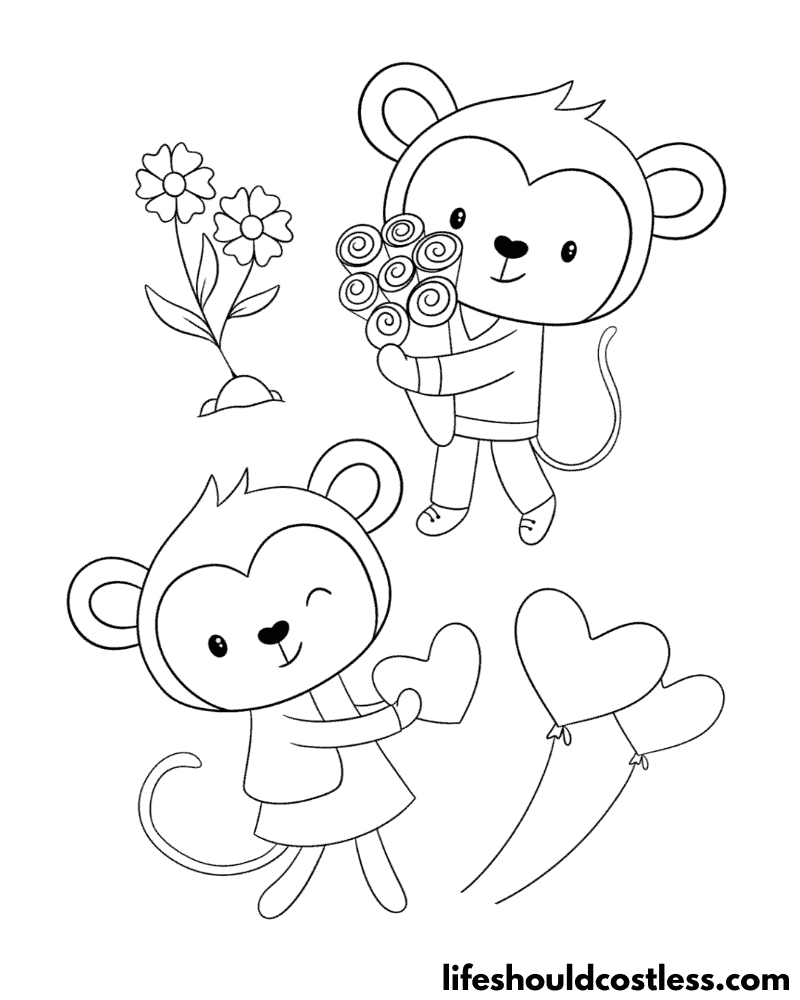
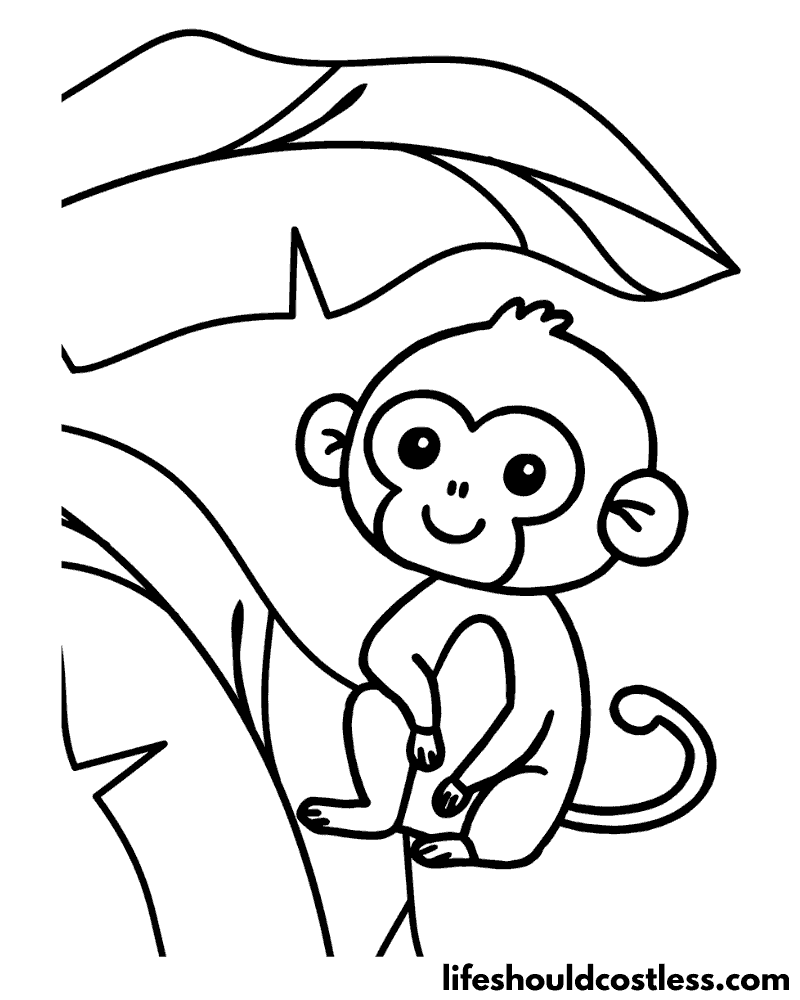
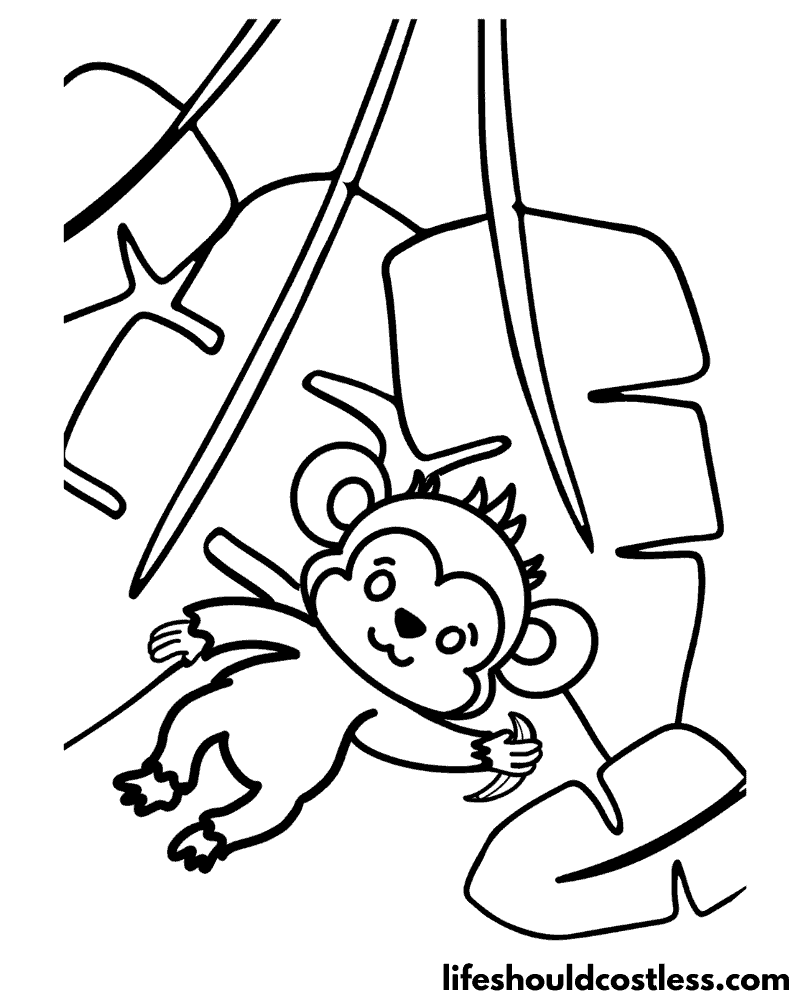
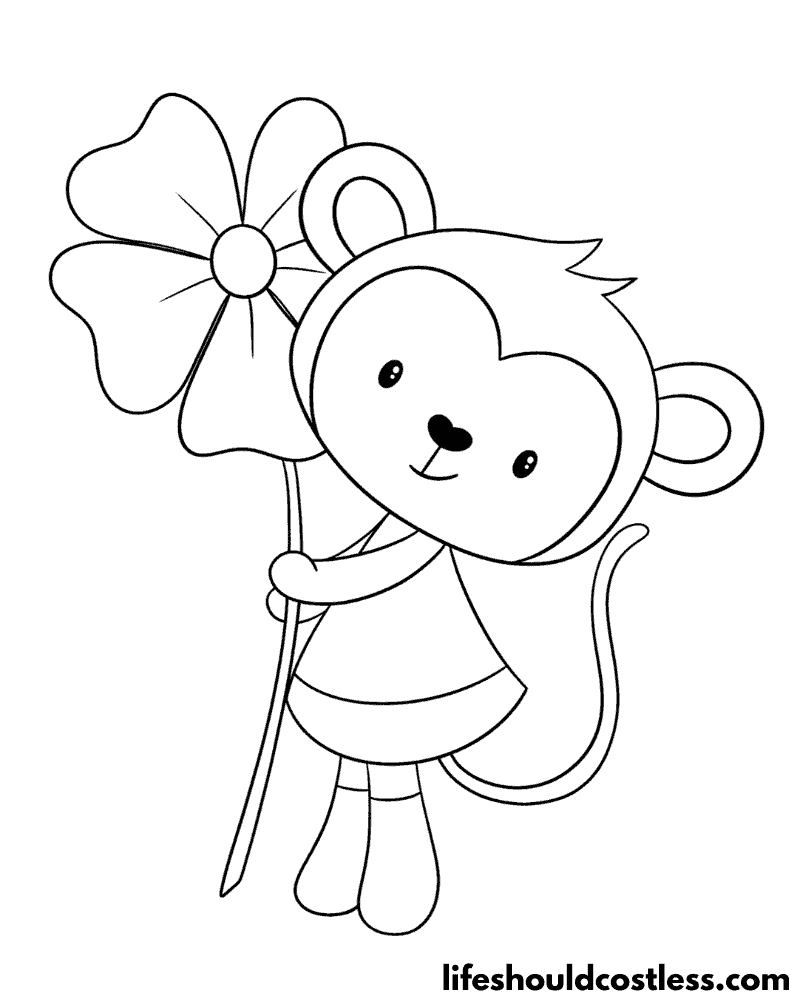
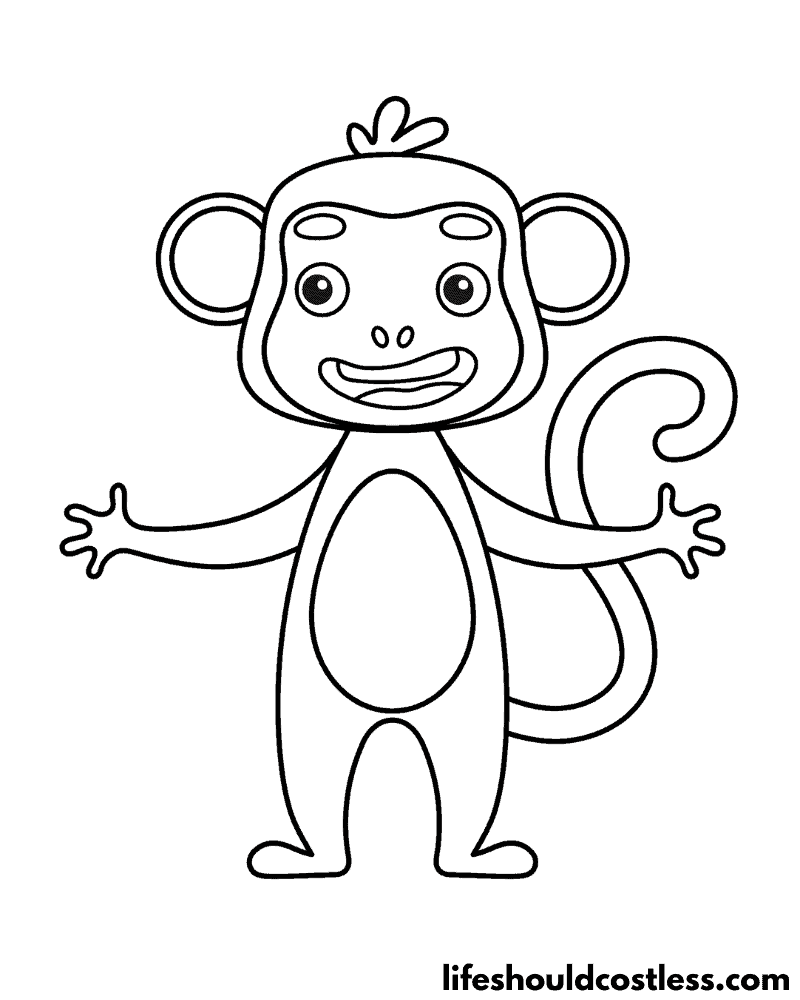
FAQ’s
The color of a monkey’s skin can vary widely depending on the species. While many monkeys have fur that covers most of their bodies, the color of their skin is often not readily visible.
However, in areas where there is little or no fur, such as the face, hands, feet, and genitalia, the skin color can provide insights into the monkey’s overall appearance.
For example:
Human-Like Skin: Some monkeys, particularly those closely related to humans like chimpanzees and baboons, have skin that can range from pale pink to brownish-black.
Variability: Skin color can also vary within species, influenced by factors like genetics, age, and health. Newborn monkeys might have different skin colors than adults.
Pigmentation: The presence of melanin, the pigment responsible for skin color, can determine the variation in skin tones among different monkey species.
It’s important to note that the skin color of monkeys is often not as prominently visible as it is in humans, due to their fur covering.
If you’re coloring a picture of a monkey, you can use creative freedom to choose skin colors that complement the overall color scheme of your artwork. Just be sure to refer to reference images or research specific monkey species if you’re aiming for accuracy.
The color of a monkey’s hair can vary greatly depending on the species. Monkeys come in a wide range of colors and patterns, and their fur can be anything from shades of brown, black, and gray to more vibrant colors like red, orange, and gold. Some monkeys even have patterns such as spots, stripes, or mottled fur.
Here are a few examples of monkey species and their fur colors:
Capuchin Monkey: Capuchins often have a mix of brown and black fur with lighter tones on their faces and chests.
Howler Monkey: Howlers can have fur ranging from black to reddish-brown. Some species have distinct facial markings.
Spider Monkey: Spider monkeys usually have long, sleek fur that can range from dark brown to black.
Mandrill: The mandrill is known for its strikingly colorful face, with hues of blue and red. The rest of its body is covered in olive-brown fur.
Golden Lion Tamarin: This small monkey has bright orange to reddish-gold fur, which is its defining feature.
Proboscis Monkey: The male proboscis monkey has a unique appearance with a large, pendulous nose and reddish-brown fur.
Colobus Monkey: Colobus monkeys are known for their black fur with white accents, giving them a distinct black-and-white appearance.
Squirrel Monkey: Squirrel monkeys have short, dense fur that can range from gray to olive-brown, with a pale face and dark markings.
When coloring pictures of monkeys, you can refer to reference images of the specific species you’re depicting. If you’re using your creativity, feel free to experiment with various color combinations to give your monkey artwork a unique and artistic flair.
*I will add more monkey colour / color questions and answers as the questions get sent to me.
Conclusion
In conclusion, exploring the world of monkey coloring pages offers a delightful journey of creativity and imagination.
These charismatic creatures, with their diverse species and captivating behaviors, provide an endless source of inspiration for artists of all ages.
Through the act of coloring, we can bring these playful primates to life, capturing their vibrant fur, intricate patterns, and unique personalities.
Monkey coloring pictures not only provide a canvas for artistic expression but also offer an opportunity to learn about the fascinating world of primates.
As we carefully select colors, blend shades, and pay attention to intricate details, we engage in a form of mindful creativity that can be both relaxing and rewarding.
Whether we’re replicating the natural hues of real monkey species or unleashing our artistic instincts to create whimsical interpretations, the act of coloring these pages allows us to celebrate the diversity of the animal kingdom.
Each monkey species holds its own charm, waiting to be translated onto paper with a burst of color.
As we put our creative touches to these monkey images, we not only hone our artistic skills but also foster an appreciation for the wonders of nature.
These pages serve as windows into the lush habitats monkeys inhabit, the intricate designs of their fur, and the intriguing dynamics of their social lives.
In a world where stress and fast-paced routines often dominate, engaging in the meditative practice of coloring monkeys can be a therapeutic escape.
It reconnects us with the simple joys of creativity and allows us to immerse ourselves in the intricate beauty of the animal kingdom.
So, whether you’re a budding artist, a dedicated colorist, or simply seeking a way to unwind, these pages offer a captivating avenue to explore, create, and appreciate the boundless spectrum of colors that enrich our world and the wild landscapes that monkeys call home.
Thanks so much for stopping by my blog and supporting my endeavors to make people’s lives a little easier/better/more affordable.
If you liked this post, or found it helpful in any way, please make sure to share it with your family, friends, and co-workers via social media.
Or you could even send them the direct link via email. Whichever way you choose to spread the love, I super appreciate it! ~Sarah
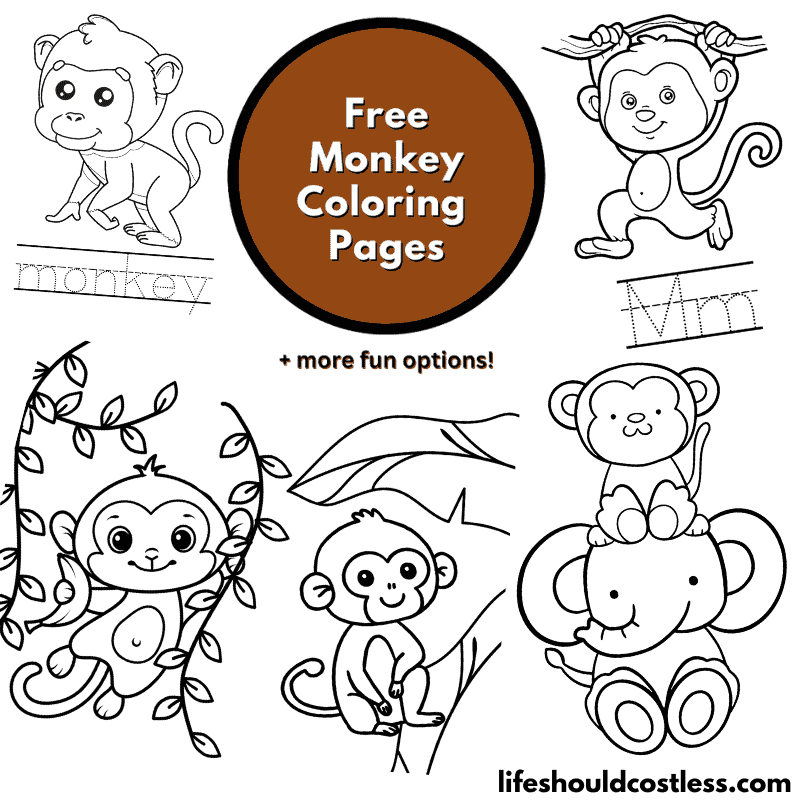
How To Follow & Support This Site
- If you would like to subscribe to my email list, go here.
- Make sure to follow along via social media, by going here.
- If you would like to learn how to really show your support to this site (at no cost to you), go here.
- If you would like to make a direct donation to the site, go here.
Check out my other free printables
- To see all of my free printables, go here.
- If you would like to see an alphabetized index of free printable coloring pages, go here!
- All of my animals coloring pages are found here.
- Or, my other mammals coloring pages can be found here.
Otherwise, here are direct links to several of my other related posts that you’re also going to love:
Animals / Mammals
Animals / Birds
Animals / Insects
Other good resources for a printable monkey
- https://www.coloring.ws/monkey.htm
- https://www.bestcoloringpagesforkids.com/monkey-coloring-pages.html
- https://www.colormegood.com/animals/monkey.html
*This post was originally shared to this blog on 08/08/2023, and has since been updated to improve user experience, add video instruction, as well as to make it as shareable as possible across the social medias.
**Please note that I do try my hardest to provide factual, but easy to understand, information about each topic. If you notice a discrepancy in my coloring pages, facts, or see something that you deem “misinformation/incorrect” please make sure to notify me about it. I would prefer that you send me an email with a link to a more reputable resource on that subject, so that I can correct it as soon as possible. Thanks so much for helping this site become the best that it can be!
***Resources from djinkers were used in the production of this article.
